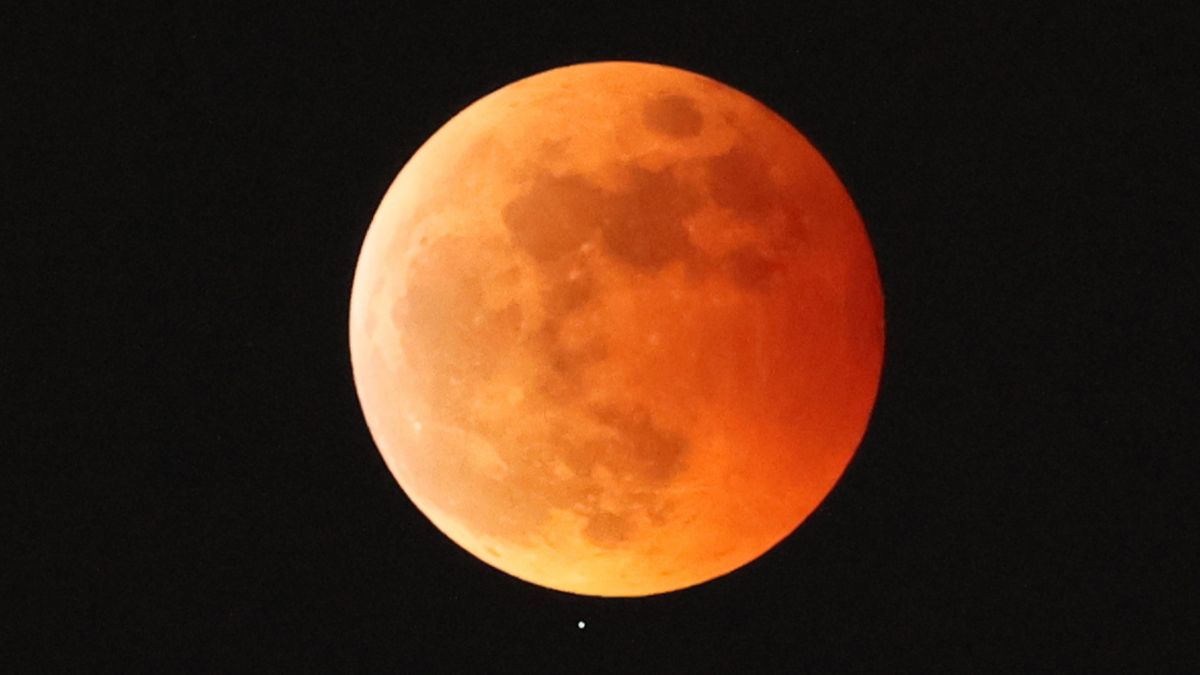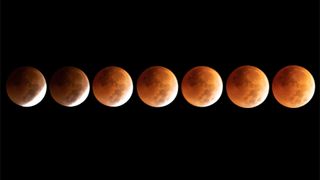
Get ready for an extraordinary astronomical event! A total lunar eclipse will grace the skies above Earth for the first time since 2022. On the evening of **March 13-14, 2025**, spectators in North and South America will have a fantastic opportunity to observe all the stages of what is popularly referred to as a “blood moon.”
This total lunar eclipse will last for approximately five hours, with the full moon passing through Earth’s shadow, resulting in a captivating reddish glow for around 65 minutes. Unlike a total solar eclipse, which can only be viewed from a narrow path, a total lunar eclipse is visible from anywhere on the night side of Earth. During the night of March 13-14, this will include all time zones in North America, including Alaska and Hawaii. Observers located in Western Europe will see the moon set while it is still eclipsed, whereas those in Australia and New Zealand will witness the moon rising already in totality. (Totality refers to the phase when the celestial body is completely obscured as seen from Earth.)
A total lunar eclipse occurs when Earth is situated directly between the sun and a full moon. This alignment causes Earth’s darkest shadow, known as the umbra, to envelop the lunar surface. The moon appears red due to sunlight refracted through Earth’s atmosphere, which filters out shorter wavelengths, leaving only the longer, reddish tones. This phenomenon is reminiscent of the colors observed during sunrise and sunset.
Related: What makes the sky blue?
Phases of the “Blood Moon” Lunar Eclipse
This mesmerizing lunar event will unfold in five distinct stages, occurring between 11:57 p.m. and 6 a.m. EDT (03:57 to 10:00 UTC), as indicated by Timeanddate.com. The first stage marks the moon’s entrance into Earth’s outer shadow, or penumbra, causing it to dim. Next, it transitions into the umbra, where it gradually adopts a reddish tint as Earth’s shadow progressively covers it.
The totality phase, which is the highlight of this event, is when the entire lunar surface turns a deep red, creating the iconic “blood moon.” During the 65-minute totality, halfway through, the eclipse starts to reverse as the moon begins to move out of Earth’s umbra and penumbra, eventually returning to its normal bright, white-gray color.

For viewers in the eastern regions of North America, the initial partial phase will commence at **1:09 a.m. EDT on March 14**, with totality spanning from **2:26 a.m. to 3:32 a.m. EDT**. In contrast, those on the West Coast will experience the partial phase starting at **10:09 p.m. PDT on March 13**, with totality occurring from **11:26 p.m. to 12:32 a.m. PDT on March 14**. Since lunar eclipses are worldwide events visible simultaneously, these variations are due to time zone differences.
While you can witness the entire lunar eclipse with the naked eye, utilizing a reliable backyard telescope or a quality pair of stargazing binoculars can enhance your experience, allowing you to observe Earth’s shadow moving across the moon and even reveal specific lunar features, such as large craters.
If you happen to miss this total lunar eclipse in March, don’t worry; another one will occur later in 2025, although it will primarily be visible in Asia, leaving North American viewers largely without a sight.
Test Your Knowledge: How Much Do You Know About Our Closest Celestial Companion?









